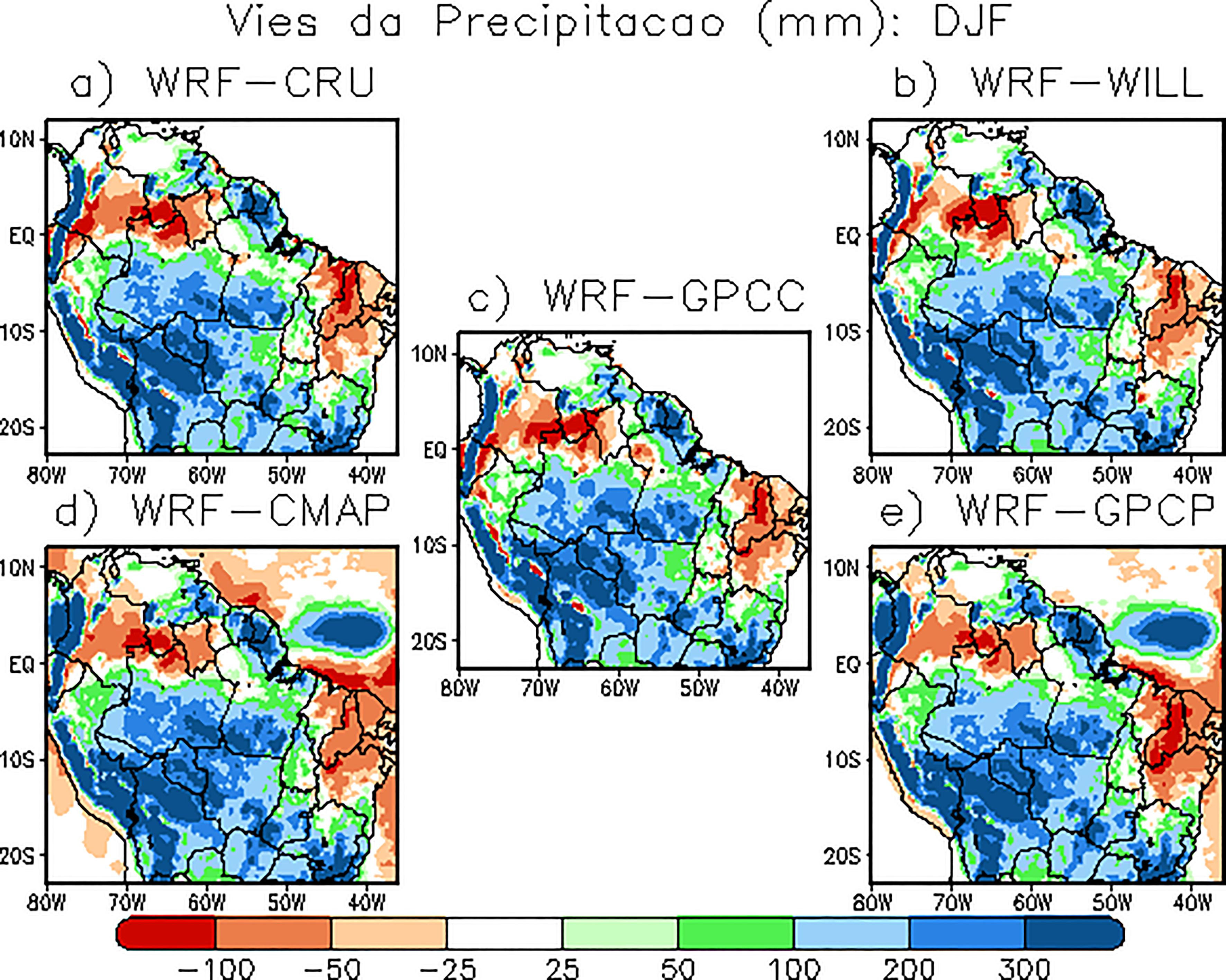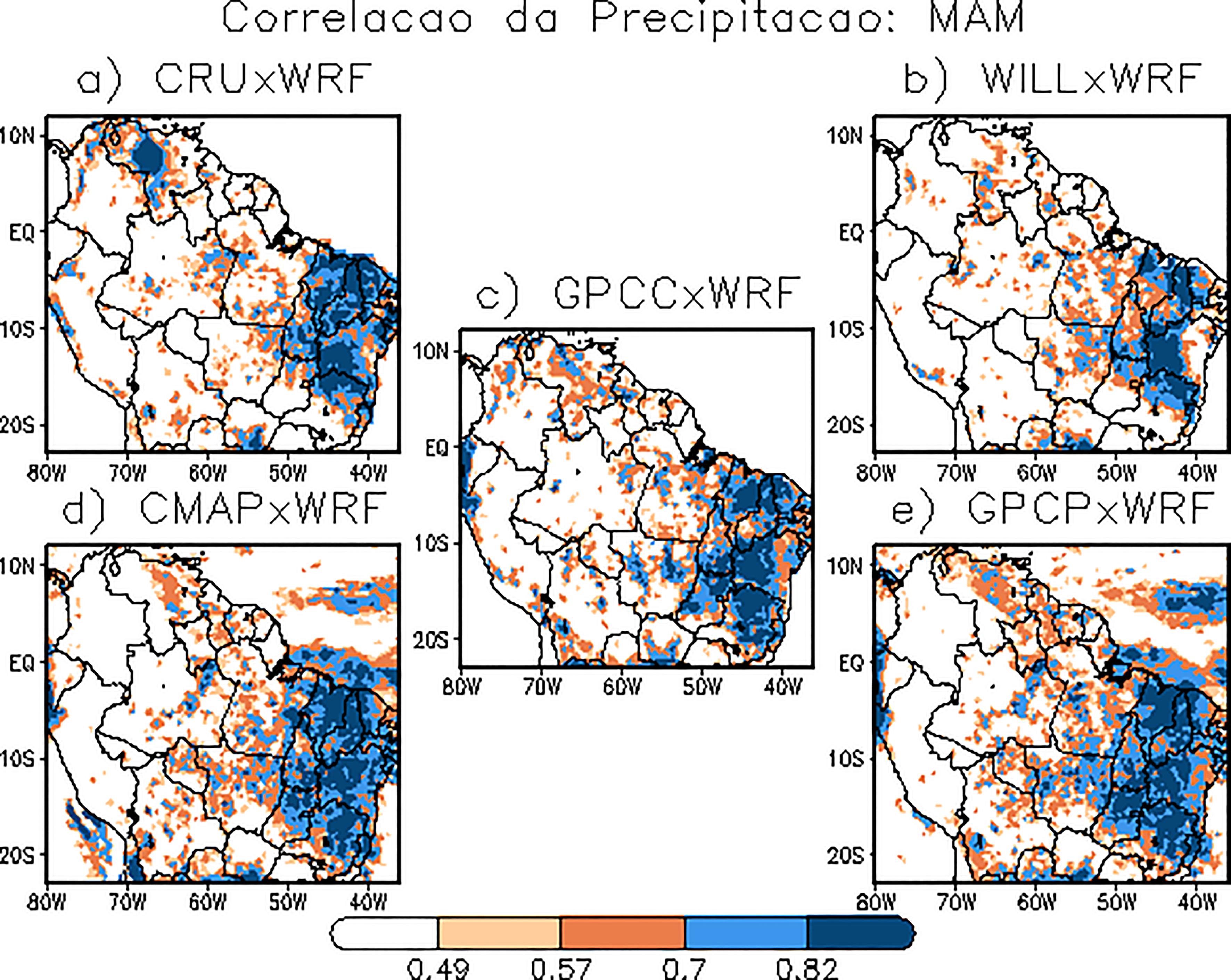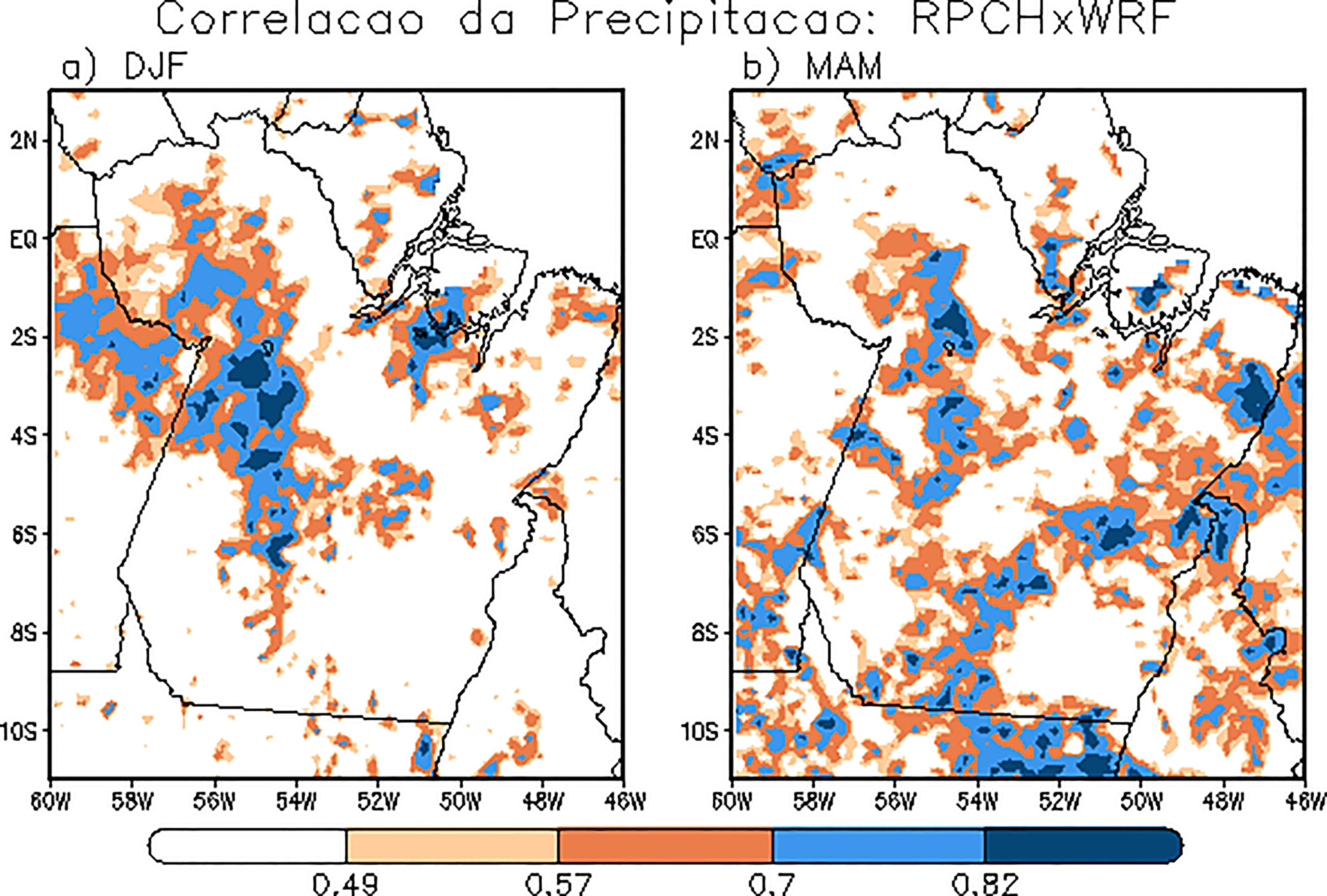Abstract
Precipitation over the northern Amazon during the austral summer and autumn seasons of the 1988- 1999 was simulated using the Regional Weather Research and Forecasting (WRF) model, with downscaling approach with nested domains of 45 and 15 km. The boundary and initial conditions were obtained from the Climate Forecast System Reanalysis (CFSR) of the National Centers for Environmental Prediction (NCEP). The model skill was tested using different reanalyzed precipitation datasets that represent different space scales. The bias of the model shows seasonal and spatial dependences, with positive bias in southwestern Brazilian Amazon during summer and in northwestern South America during autumn. The downscaling was needed to reproduce the surface influences on the regional and local systems that affect the rainfall distribution in the region. The WRF model, in general, reproduces the main observed precipitation patterns, without the dry bias, typical of general circulation models (GCM). The results indicate that the dynamic downscaling technique improves the WRF model performance for the seasonal climate forecast in the Amazon region.
Keywords:
climate simulation; WRF; South America; precipitation; downscaling technique












